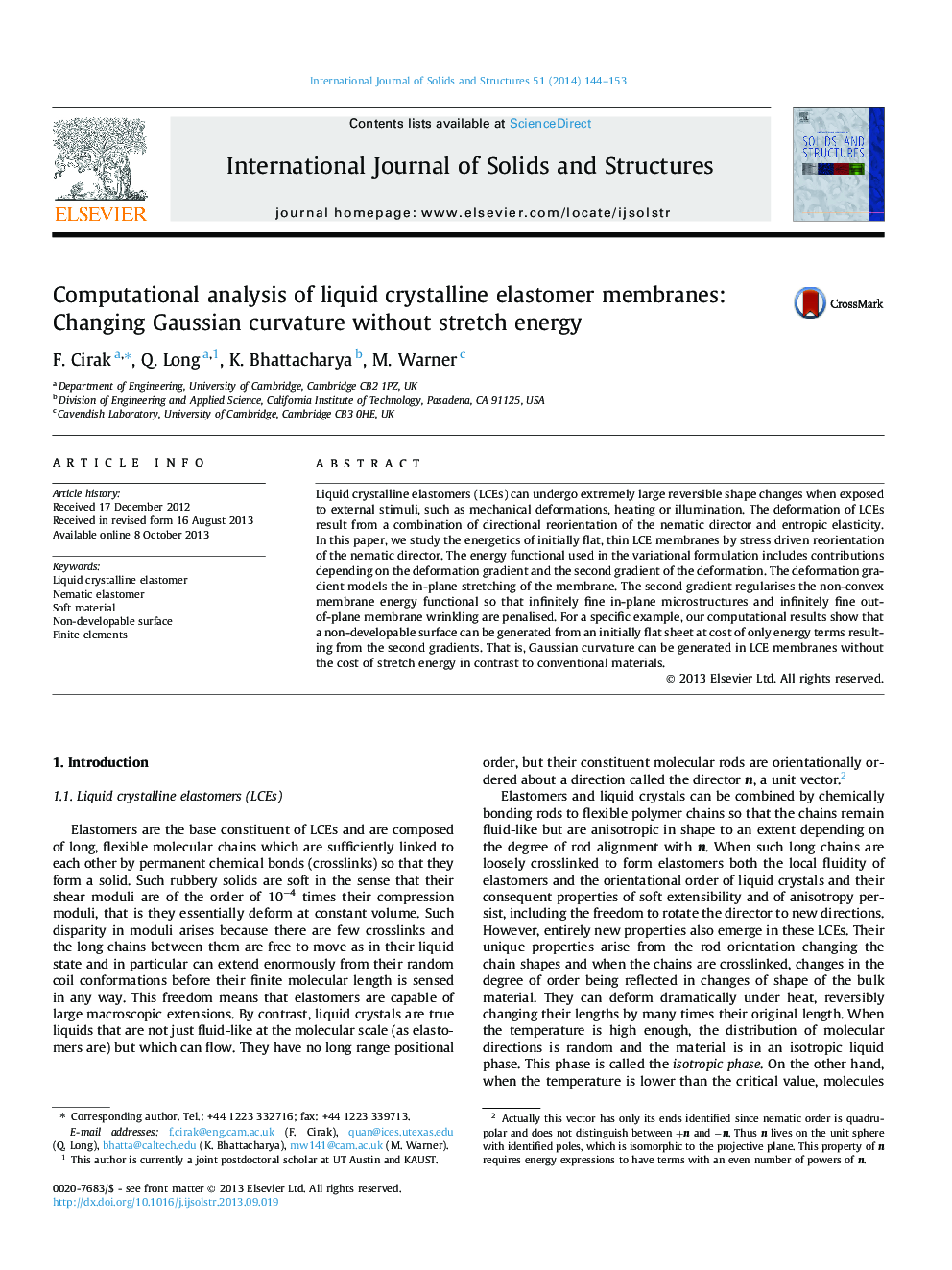| Article ID | Journal | Published Year | Pages | File Type |
|---|---|---|---|---|
| 277723 | International Journal of Solids and Structures | 2014 | 10 Pages |
•A finite element technique for liquid crystalline elastomer membranes is developed.•Proposed membrane energy functional entails first and second gradients of deformation.•A non-developable surface can be generated without the cost of stretch energy.
Liquid crystalline elastomers (LCEs) can undergo extremely large reversible shape changes when exposed to external stimuli, such as mechanical deformations, heating or illumination. The deformation of LCEs result from a combination of directional reorientation of the nematic director and entropic elasticity. In this paper, we study the energetics of initially flat, thin LCE membranes by stress driven reorientation of the nematic director. The energy functional used in the variational formulation includes contributions depending on the deformation gradient and the second gradient of the deformation. The deformation gradient models the in-plane stretching of the membrane. The second gradient regularises the non-convex membrane energy functional so that infinitely fine in-plane microstructures and infinitely fine out-of-plane membrane wrinkling are penalised. For a specific example, our computational results show that a non-developable surface can be generated from an initially flat sheet at cost of only energy terms resulting from the second gradients. That is, Gaussian curvature can be generated in LCE membranes without the cost of stretch energy in contrast to conventional materials.
